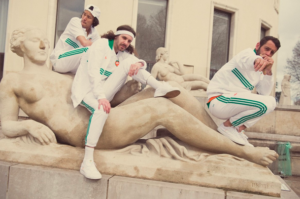We know that trends don’t just appear out of nowhere. They’re born and inspired by a need for something fresh…and every trend starts somewhere. Trends work in cycles. Born from something that was once dated, old ideas creep back in and become new again.
The 80s inspired many trends and had an unmistakable influence on generations that followed. Three decades later the 80s influence is back and trending. From music to fashion to TV, the 80s have hit again and hit hard.
So…Where is it all coming from? Born between 1982 and 2004 and right smack in the middle of a few influential decades, Millennials are the first generation to be constantly bombarded with information from the past. Born with the internet at their fingertips, it’s easier than ever to live vicariously through past generations, creating what’s being referred to as ‘early onset nostalgia’. The feeling of familiarity and fondness toward trends and styles that weren’t part of your childhood, youth, or teenage years but still elicits emotions as if they were.



Combined with the experience of living through one of the greatest recessions in history, Millennials have a need and fondness for simpler times. And the retro trend has arrived as requested.
Early-onset nostalgia is opening doors to new and familiar marketing ideas. Toys, games, brands that appeared to die five or 10 years ago are reappearing as ‘retro’ and opens up huge possibilities for nostalgia-based campaigns. Brands like KFC and McDonalds have brought back old favourites for a new-age/retro approach to beloved characters – connecting them with a new audience.
Done well, nostalgia marketing strikes a chord with millennials that other tactics just don’t. The best campaigns are timely and relevant but must be authentic with a strong emotional hook bringing consumers back to a simpler time, and riddled with nostalgia.